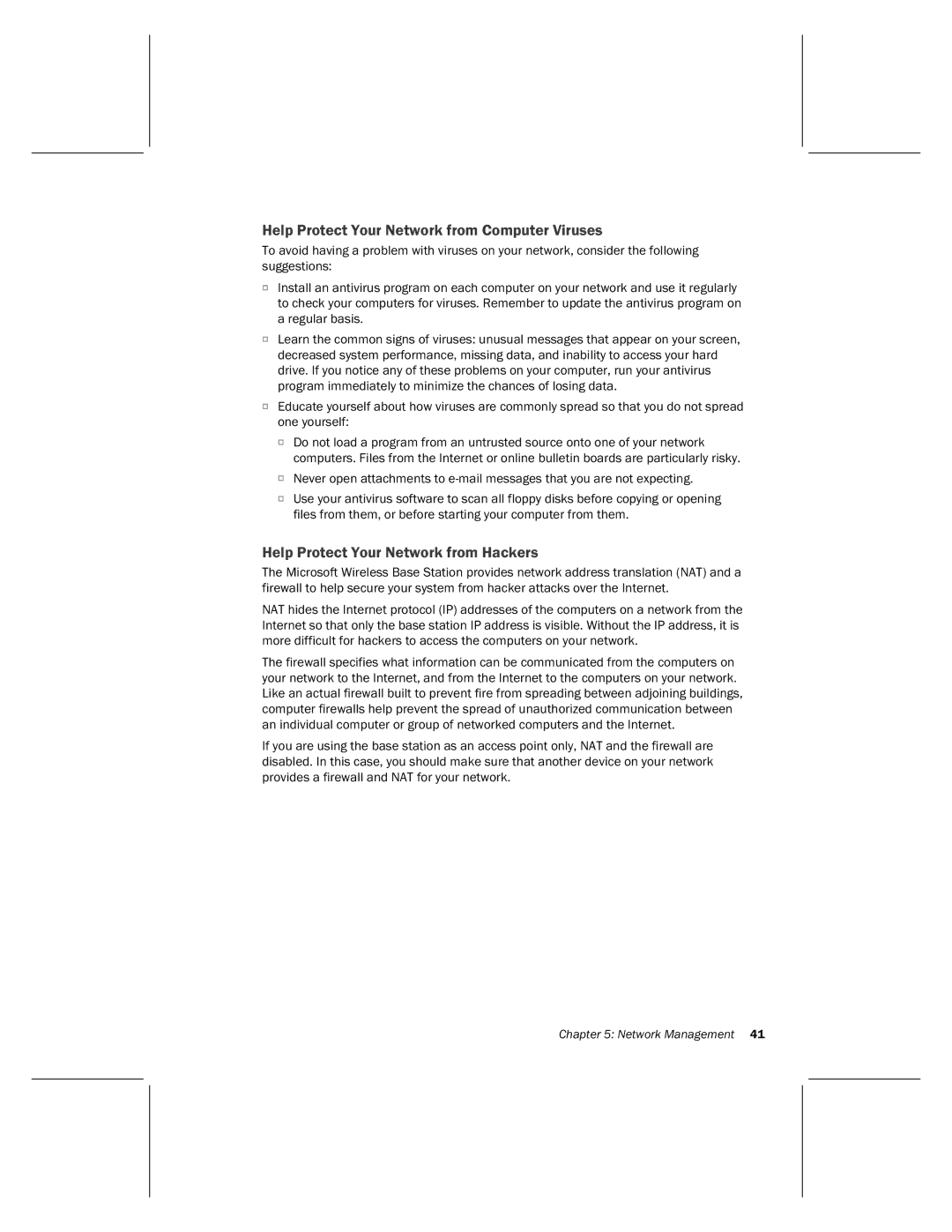
Help Protect Your Network from Computer Viruses
To avoid having a problem with viruses on your network, consider the following suggestions:
OInstall an antivirus program on each computer on your network and use it regularly to check your computers for viruses. Remember to update the antivirus program on a regular basis.
OLearn the common signs of viruses: unusual messages that appear on your screen, decreased system performance, missing data, and inability to access your hard drive. If you notice any of these problems on your computer, run your antivirus program immediately to minimize the chances of losing data.
OEducate yourself about how viruses are commonly spread so that you do not spread one yourself:
O Do not load a program from an untrusted source onto one of your network computers. Files from the Internet or online bulletin boards are particularly risky.
O Never open attachments to
O Use your antivirus software to scan all floppy disks before copying or opening files from them, or before starting your computer from them.
Help Protect Your Network from Hackers
The Microsoft Wireless Base Station provides network address translation (NAT) and a firewall to help secure your system from hacker attacks over the Internet.
NAT hides the Internet protocol (IP) addresses of the computers on a network from the Internet so that only the base station IP address is visible. Without the IP address, it is more difficult for hackers to access the computers on your network.
The firewall specifies what information can be communicated from the computers on your network to the Internet, and from the Internet to the computers on your network. Like an actual firewall built to prevent fire from spreading between adjoining buildings, computer firewalls help prevent the spread of unauthorized communication between an individual computer or group of networked computers and the Internet.
If you are using the base station as an access point only, NAT and the firewall are disabled. In this case, you should make sure that another device on your network provides a firewall and NAT for your network.
Chapter 5: Network Management 41
